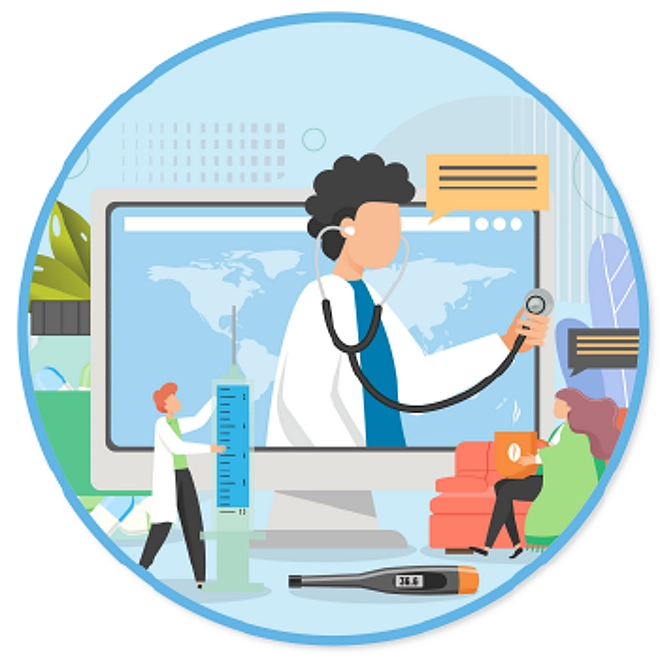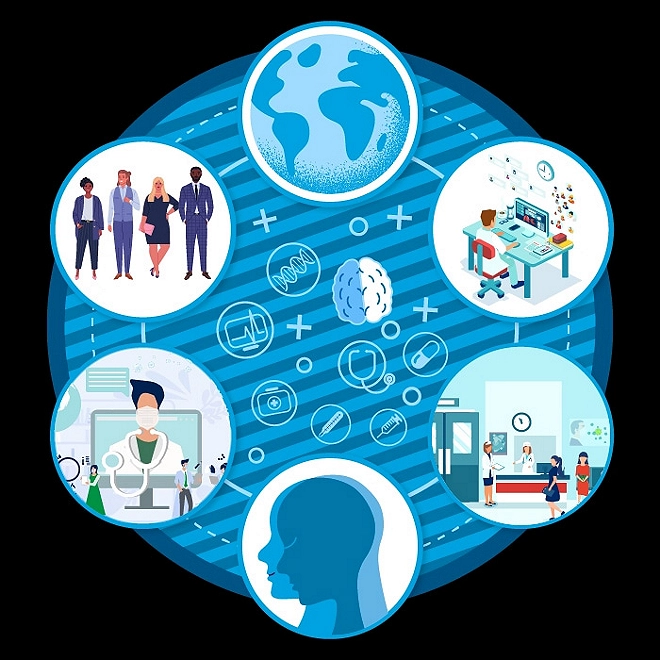The Future of Health
How innovation will blur traditional health care boundaries
The life sciences and health care industry is on the brink of large-scale disruption. In a future of health that’s defined by radically interoperable data, open yet secure platforms, and consumer-driven care, what role will you play?
Breaking the cost curve: Could a dramatic slowdown in health spending be around the corner?
Deloitte health actuaries project a deceleration in health spending as a percentage of GDP, likely creating a US$3.5 trillion “well-being dividend” by 2040. Explore what the future of health could look like, including how a new health economy–different from today’s business models–could drive 85% of revenue.
COVID-19 has revealed how vulnerable the health care industry is to change and its need for structural and technological transformation. In the future of health, we expect six key areas—data sharing, interoperability, equitable access, empowered consumers, behavior change, and scientific breakthrough—to collectively transform the existing health system from treatment-based reactionary care to prevention and well-being. The traditional boundaries of the industry will dissolve and new roles will emerge in the future of health as exponential innovation propels the industry towards 2040.
How will greater data connectivity and interoperability shape the future of health?
Fundamental shifts in innovation tend to occur in seven-year cycles. And while it’s possible to foresee what could happen over the next one or two cycles, looking ahead to 2040 (three cycles from now) will likely reveal a completely different reality than what we can comprehend today. What will emerge in the next 21 years that will dramatically reshape the life sciences and health care industry?
Are you ready to explore the future of health?
The 10 archetypes defining the health ecosystem of the future
These archetypes fall into three distinct, but interconnected, categories. Explore them below:
4. Health product developer
Health product developers will power the consumer health ecosystem by developing and manufacturing wellness and care products-from applications to drugs and devices. The economic model of these organizations are driven by their ability to enable well-being and care delivery. While there will continue to be organisations that develop products, those products won’t be limited to pharmaceuticals and medical devices. They will also include software, applications, and wellness products.
5. Consumer-centric health community
Along with companies that develop health products, other organisations will provide the structure that supports virtual communities. Consumer-centric health players will provide virtual, personalized wellness and care to consumers; leverage community to encourage behavior change; and drive consumer and caregiver education.
6. Specialty care operator
Two decades from now, we will still have disease, which means we will still need specialty care providers and highly specialised facilities where those patients can receive care. Specialty care operators will provide essential specialty care and interventions when in-home wellness and care efforts are insufficient.
7. Localized health hub
While there will be some specialty care, most health care will likely be delivered in localised health hubs. Localised health hubs will serve as centres for education, prevention, and treatment in a retail setting. Additionally, local hubs will connect consumers to virtual, home, and auxiliary wellness providers.
2040: Our vision for the future of health
By 2040, health care as we know it today will no longer exist. There will be a fundamental shift from “health care” to “health.” And while disease will never be completely eliminated, through science, data, and technology, we will be able to identify it earlier, intervene proactively, and better understand its progression to help consumers more effectively and actively sustain their well-being. The future will be focused on wellness and managed by companies that assume new roles to drive value in the transformed health ecosystem.
Driven by greater data connectivity; interoperable and open, secure platforms; and increasing consumer engagement, 10 archetypes are likely to emerge and will replace and redefine today’s traditional life sciences and health care roles to power the future of health. The 10 archetypes will fall into three distinct, but interconnected, categories:
- Data and platforms: These archetypes will be the foundational infrastructure that form the backbone of tomorrow’s health ecosystem. They will generate the insights for decision making. Everything else will build off of the data and platforms that underpin consumer-driven health.
- Well-being and care delivery: These archetypes will be the most health-focused of the three groupings, made up of care facilities and health communities—both virtual and physical, and will provide consumer-centric delivery of products, care, wellness and well-being.
- Care enablement: These archetypes will be connectors, financers, and regulators that help make the industry’s “engine” run.
All three components need to be fully functioning and integrated for the future of health to come to life.
Whether it’s just one or several of these archetypes, life sciences and health care organisations need to make choices now to decide which role(s) they want to play in the future. Critical to this decision is understanding how multiple archetypes could fit together into a cohesive strategy and new business models required for success in the future.
What role will you play in the future of health?






